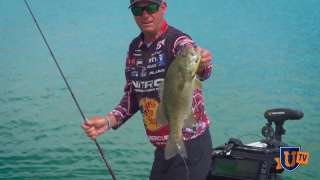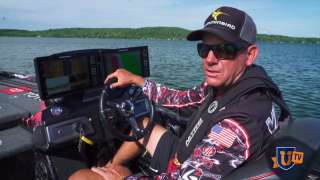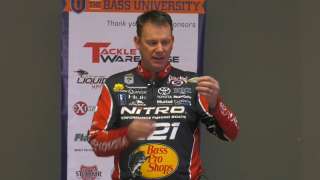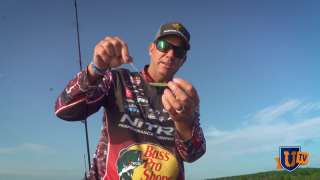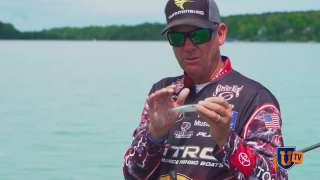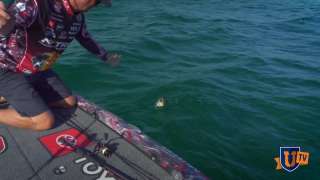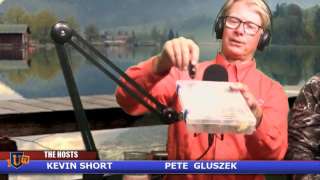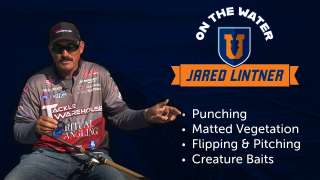Kevin VanDam takes Bass University students out on the water to discuss and demonstrate how to crank grass for bass. Lots of anglers will avoid fishing grass with crankbaits because it's easy to get the bait fouled up and vegetation balled up on your lure. Kevin VanDam shares that there are a few keys to effectively fishing grass with a crankbait, including: having the right tackle for the job, selecting the right types of grass and locating the right grass contours with your electronics. In this video, KVD demonstrates that, with the right equipment, and selecting the right location, you can catch schools of bass that are relating to grass.
- 0:15 How is it possible to crank grass? Kevin VanDam's success with this technique
- 2:14 Having the right gear to effectively fish crankbaits in the grass and trigger strikes
- 3:18 Keeping the bait out of the grass. Kevin shares the types of grass you're looking for, how the grass is growing, and using your equipment to keep the grass off your line and bait.
- 4:43 Matching the rod, line and bait for the correct running depth and ability to clear crankbaits out of the grass
- 6:50 How you want to use your electronics and fish the grass line
- 8:21 Choosing the right crankbait
- 9:48 On the water cranking grass with Kevin VanDam
- 24:12 The advantages Kevin VanDam sees in using the right size Lew's KVD Composite Cranking Casting Rod and cranking the right grass
- 26:54 Lakemaster mapping and finding the juice to win tournaments
KVD stresses that, while grass is great habitat, not all grass is great for cranking. Sometimes you'll want to approach different types of grass, or different mats with a bait or technique that's more fitting. Often other techniques can be more effective and less frustrating to fish. With the right tackle, the correct depth-running crankbait, the right fluorocarbon line and rod that provides the proper casting distance, you can really catch bass that other anglers are leaving behind. Watch this entire bass fishing class to learn Kevin VanDam's secret to locating great spots using your electronics and mapping, then milking them for as many bass as possible.


